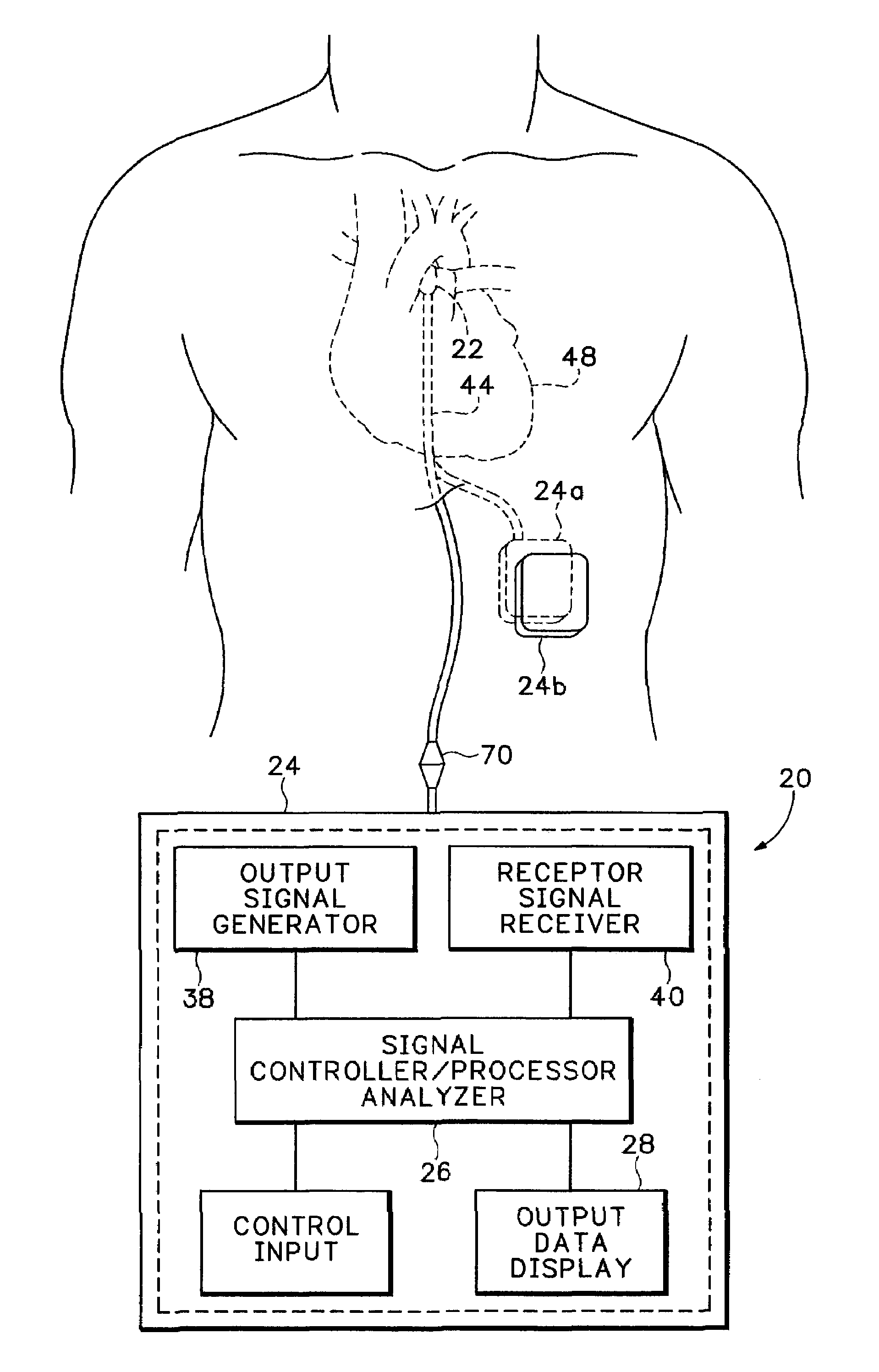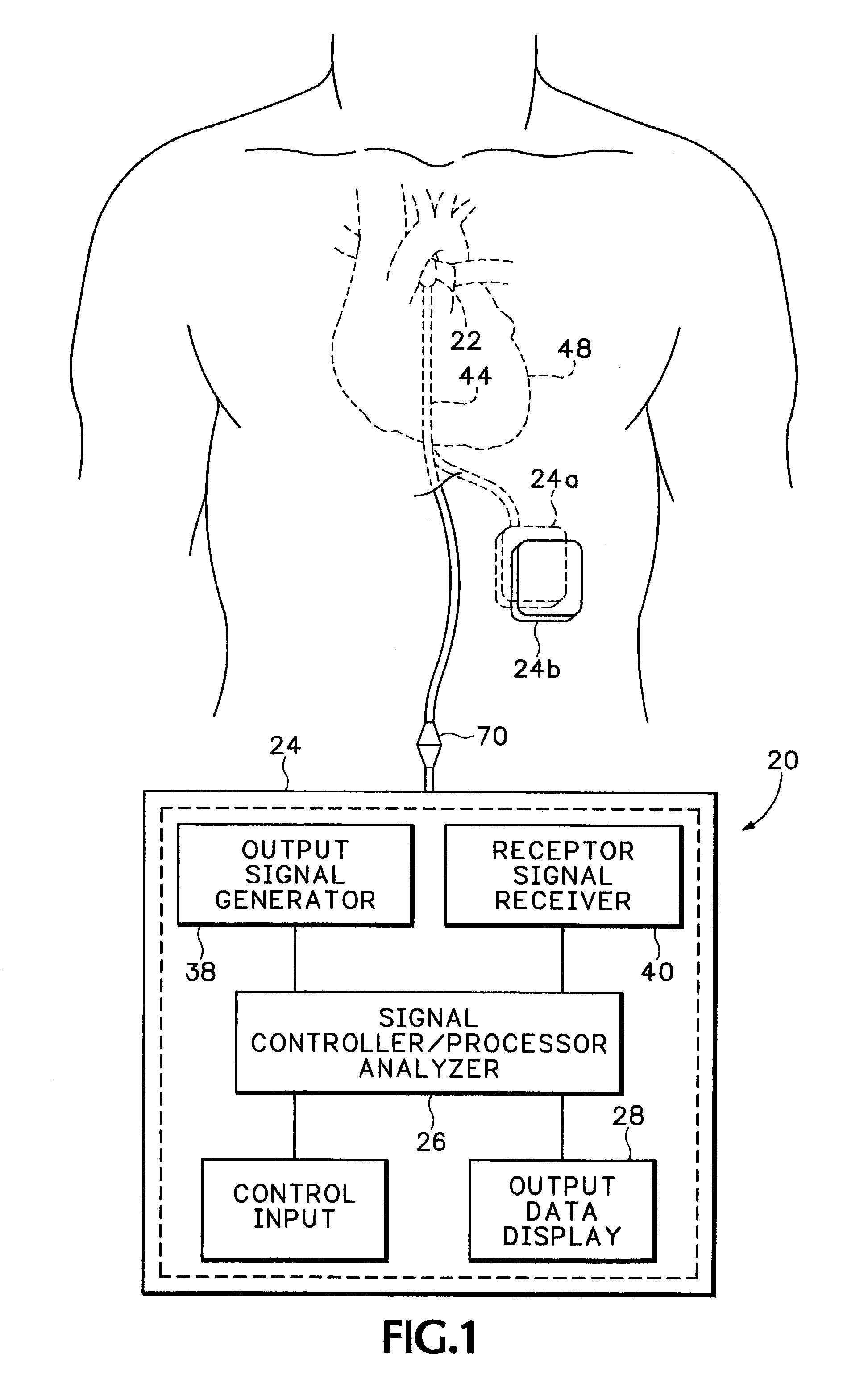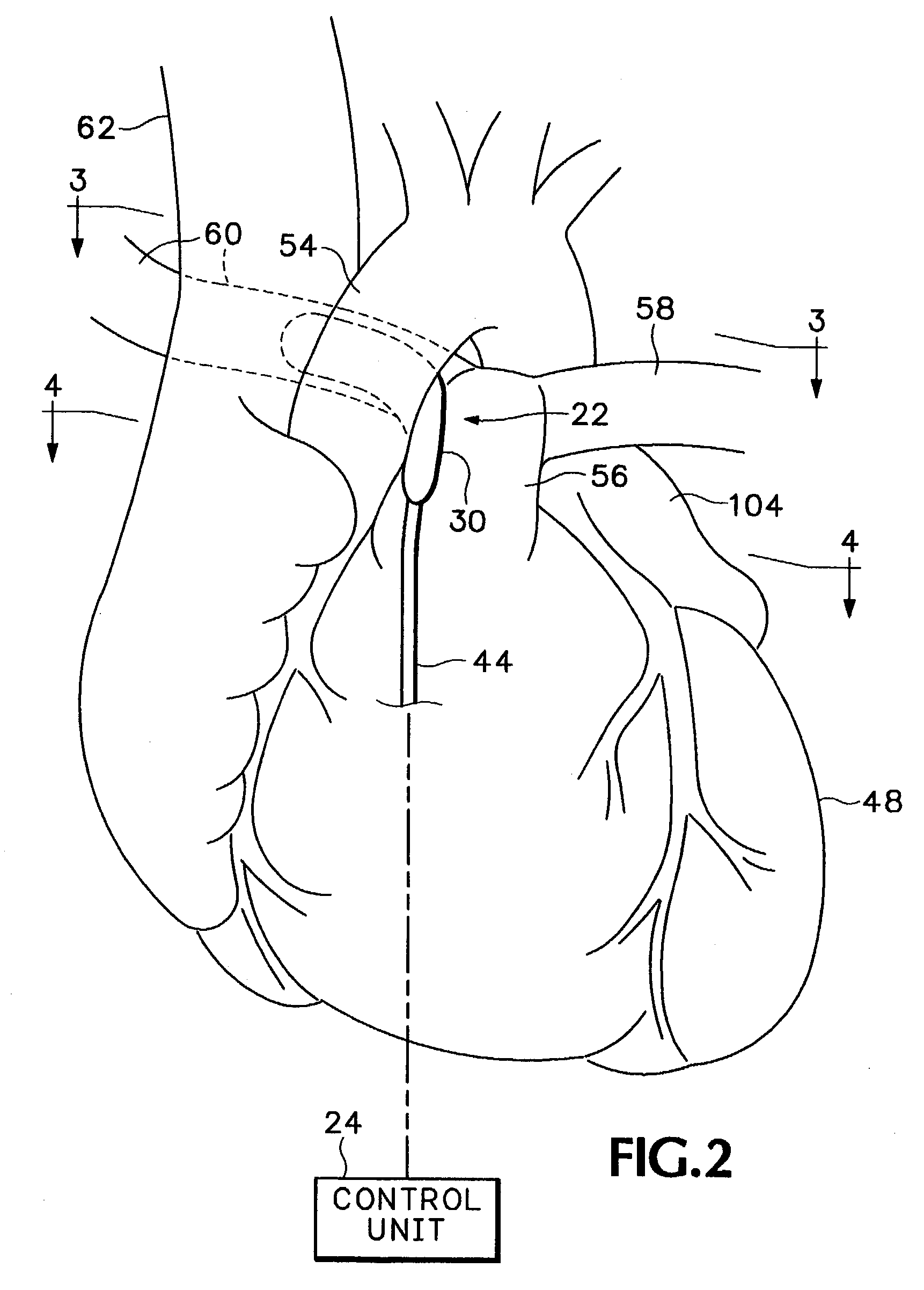Method and apparatus for monitoring blood condition and cardiopulmonary function
a technology for cardiopulmonary function and monitoring method, which is applied in the field of monitoring a patient's cardiopulmonary function and blood condition, can solve the problems of difficult and costly evaluation of a patient's cardiac output and respiratory efficiency, process cannot be performed as quickly as desirable, and analysis is costly
- Summary
- Abstract
- Description
- Claims
- Application Information
AI Technical Summary
Benefits of technology
Problems solved by technology
Method used
Image
Examples
Embodiment Construction
[0035]Referring now to FIGS. 1–7 of the drawings which form a part of the disclosure herein, a blood condition monitor 20 includes an implantable sensor section 22 and an electronics portion, or control unit 24, which may include an electronic controller and processor package 26 and an associated output data display section 28. The sensor section 22 of the blood condition monitor 20 includes a sensor carrier 30 and associated non-invasive sensors 32 and 34 used to quickly and conveniently determine the condition of a patient's blood without the need to withdraw blood samples from the patient.
[0036]The control unit 24 shown in simplified form in FIGS. 1–2 includes an electronic emitter signal generator portion 38, an electronic receptor signal receiver portion 40, and the output data display section 28. Preferably, the control unit 24 is provided as a self-contained unit incorporating suitable integrated circuit logic and data handling components to accept user instructions and provi...
PUM
 Login to View More
Login to View More Abstract
Description
Claims
Application Information
 Login to View More
Login to View More - R&D
- Intellectual Property
- Life Sciences
- Materials
- Tech Scout
- Unparalleled Data Quality
- Higher Quality Content
- 60% Fewer Hallucinations
Browse by: Latest US Patents, China's latest patents, Technical Efficacy Thesaurus, Application Domain, Technology Topic, Popular Technical Reports.
© 2025 PatSnap. All rights reserved.Legal|Privacy policy|Modern Slavery Act Transparency Statement|Sitemap|About US| Contact US: help@patsnap.com



